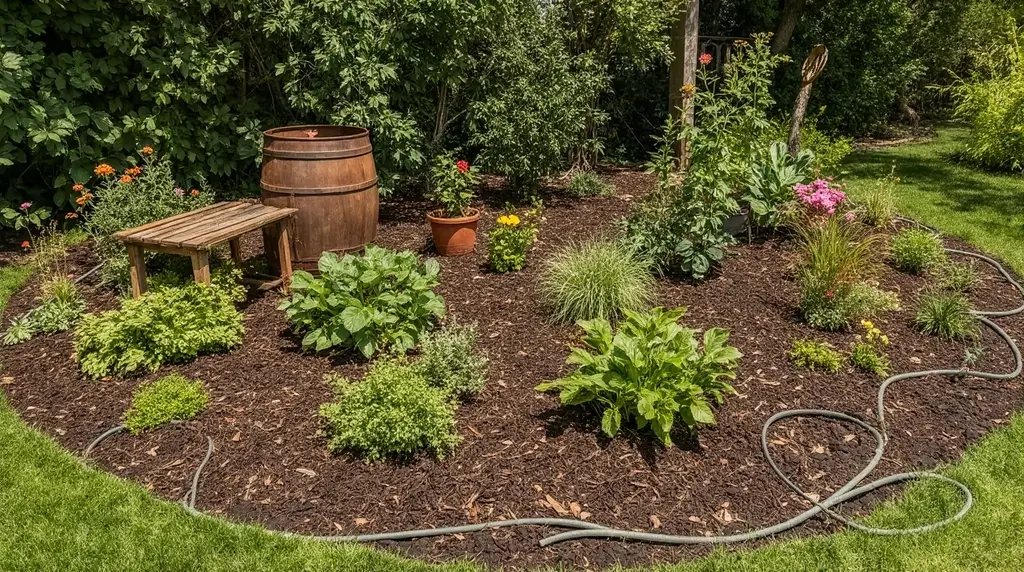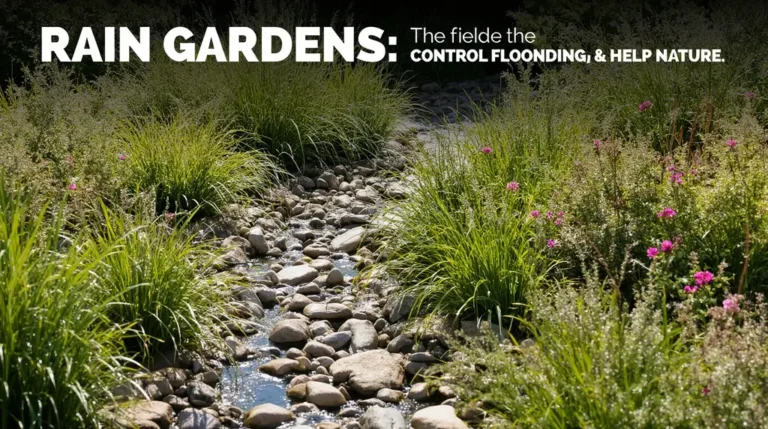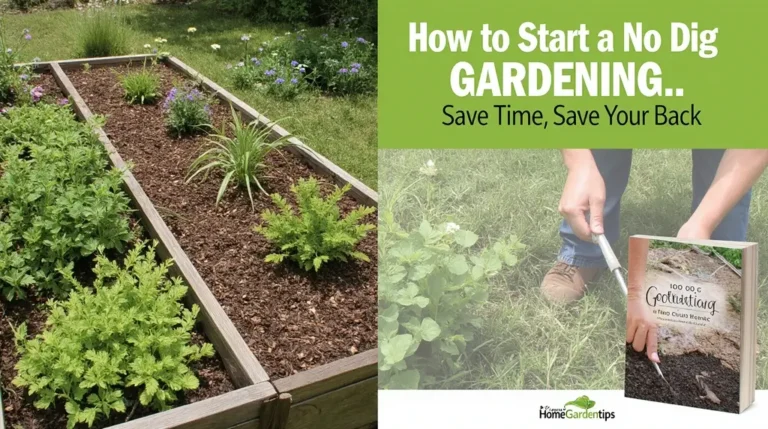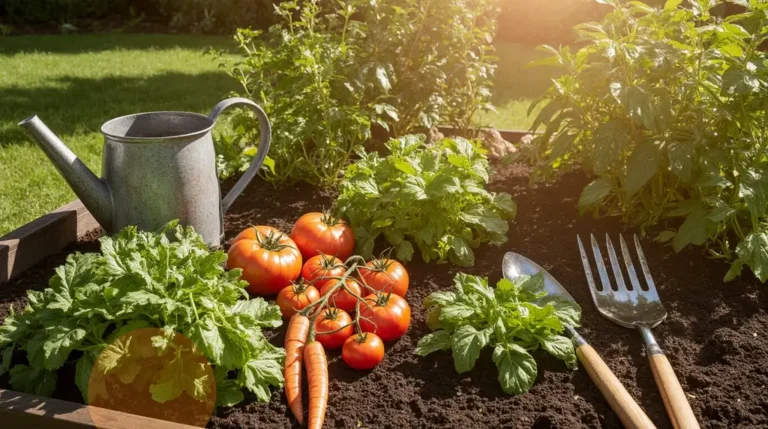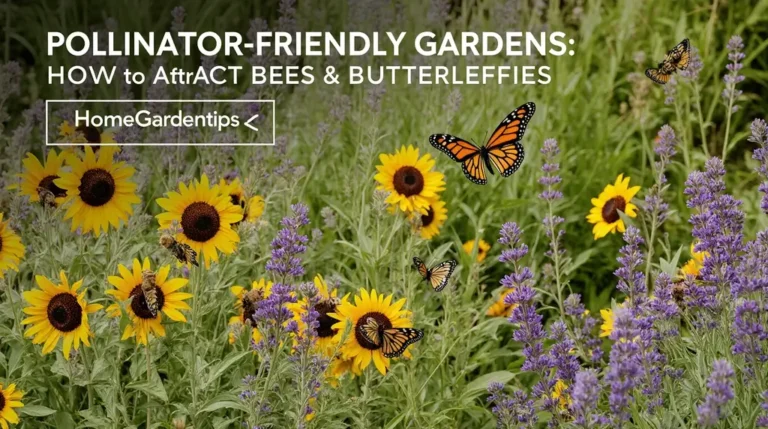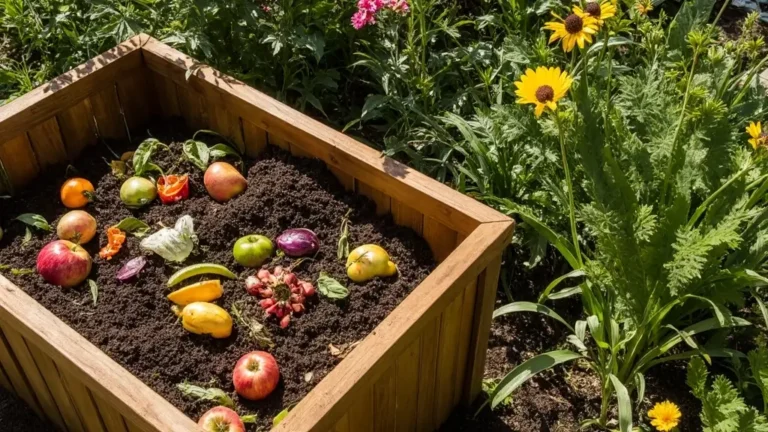Sustainable Gardening Tips: How to Grow More with Less Water
Table of Contents
Introduction: Cultivating a Greener Tomorrow, One Garden at a Time
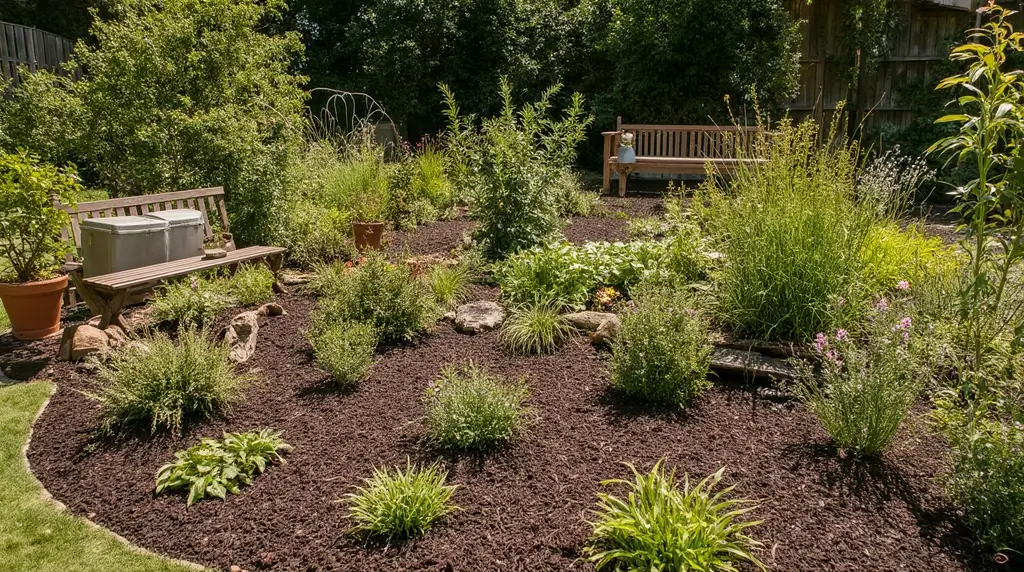
Picture this: vibrant vegetables flourishing in your backyard, colorful flowers attracting buzzing pollinators, and fresh herbs ready for harvest—all while using 50% less water than traditional gardens. This isn’t a gardening fantasy; it’s the reality of sustainable gardening. As more people discover the joy of growing their own food and creating beautiful outdoor spaces, we must consider gardening’s environmental impact and embrace practices that work with nature rather than against it. 🌱 Take your eco-friendly gardening to the next level with our exclusive product designed to support Sustainable & Organic Gardening—perfectly aligned with this article. get more about Organic Vegetable Gardening;
Sustainable gardening involves adopting eco-friendly practices that minimize environmental impact, conserve precious resources like water, and support local ecosystems. It’s about creating harmony between human needs and natural processes, resulting in gardens that thrive with less input while providing maximum benefits.
Climate change has fundamentally altered how we approach gardening. Rising temperatures, unpredictable precipitation patterns, extreme weather events, and shifting growing seasons demand new strategies. By implementing sustainable practices, we not only adapt to these changes but actively minimize our carbon footprint while creating resilient garden spaces.
The benefits extend far beyond environmental stewardship. Sustainable gardening conserves water and reduces waste while supporting biodiversity and minimizing pollution. Personally, it provides fresh, chemical-free produce, improves mental and physical well-being, reduces grocery expenses, and creates meaningful connections with nature. At the community level, these eco-friendly garden tips foster environmental responsibility and inspire collective action.
This comprehensive guide will equip you with actionable, science-backed strategies to transform your outdoor space into a thriving, water-efficient garden that benefits both you and our planet.
The Foundation of Green Growth: Building and Maintaining Healthy Soil
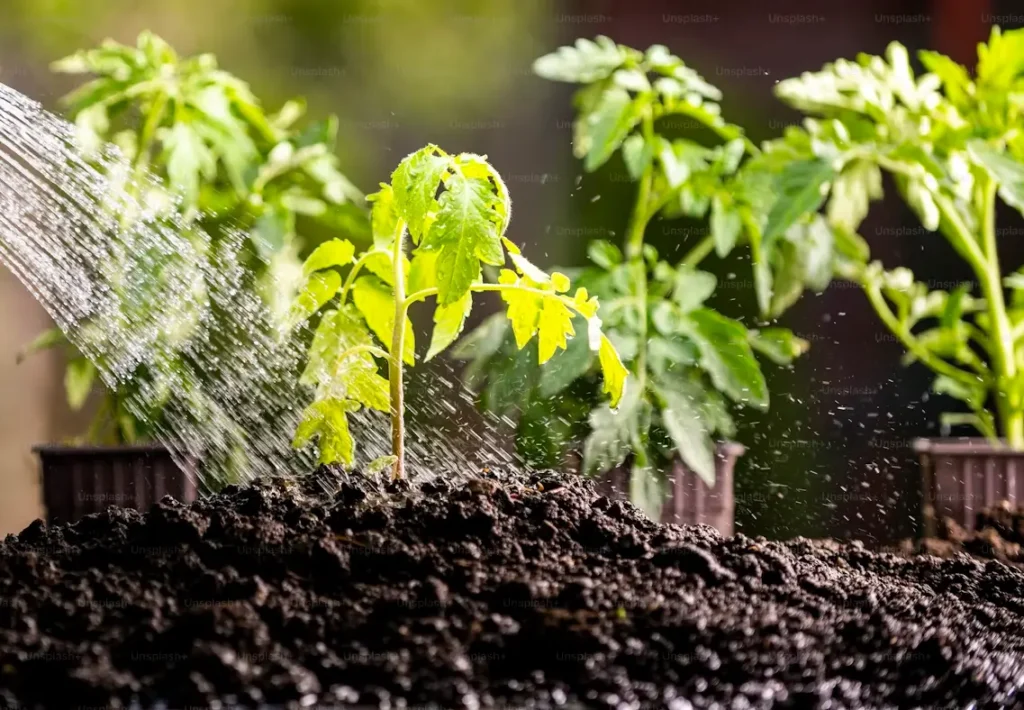
Healthy soil forms the cornerstone of any successful sustainable garden. Quality soil retains moisture more effectively, supports robust plant growth, enhances nutrient content, and promotes beneficial microbial activity that creates a self-sustaining ecosystem.
Embrace Organic Compost: Your Garden’s “Black Gold”
Organic compost represents nature’s perfect fertilizer—a nutrient-rich soil amendment derived from recycled organic matter that provides essential nutrients without environmental harm. This “black gold” improves soil structure, enhances water retention capacity, and dramatically reduces household waste.
Creating your own compost transforms fallen leaves, grass clippings, wood chips, straw, paper, cardboard, vegetable scraps, and small twigs into nutrient-dense soil enhancement. This process eliminates dependence on synthetic fertilizers while recycling materials that would otherwise contribute to landfill waste.
Strategic Mulching: Retaining Moisture & Suppressing Weeds
Water wise gardening begins with strategic mulching—a simple yet powerful technique that conserves soil moisture, protects soil from temperature extremes, prevents erosion, and naturally suppresses weeds.
Apply a four to six-inch layer of organic mulch such as wood chips, sawdust, chopped leaves, or straw directly onto soil surfaces. As organic mulches decompose, they enrich soil with nutrients, while inorganic options like landscape fabric primarily provide insulation and weed suppression without nutritional benefits.
Cover Cropping (Green Manure): Natural Soil Enrichment
Cover cropping transforms unused garden spaces into soil-building powerhouses. These protective crops prevent erosion, increase organic matter and nitrogen content, aerate compacted soil, improve water infiltration and retention, and provide habitat for beneficial organisms.
Legumes like clover form symbiotic relationships with Rhizobium bacteria, which fix atmospheric nitrogen directly into soil. Plant cover crops in fall, chop them in spring, and incorporate this “green manure” back into soil. Leave roots undisturbed to maintain soil structure and continue nutrient cycling.
Water-Wise Gardening: Conserving Our Most Precious Resource
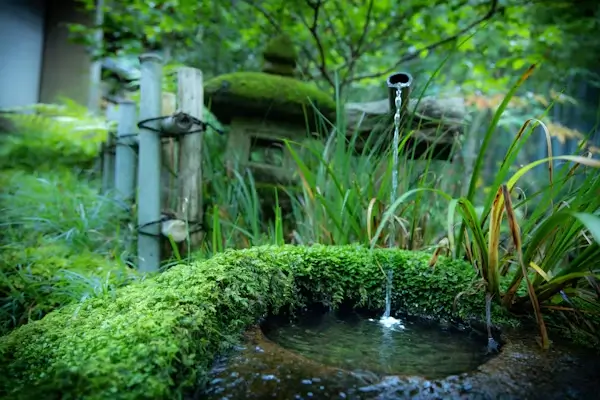
Water conservation has become critical as climate change intensifies drought conditions and depletes water supplies worldwide. Implementing water wise gardening techniques reduces environmental impact while creating more resilient gardens.
Rainwater Harvesting: Free & Sustainable Water
Rainwater harvesting captures this natural resource before it becomes runoff, reducing reliance on municipal water systems while providing plants with chemical-free irrigation. This sustainable practice significantly reduces water bills while maximizing natural resource utilization.
Install collection systems using rain barrels, large containers, or specialized greenhouse diverters with internal reservoirs. Even modest collection systems can provide substantial irrigation capacity during dry periods.
Targeted Irrigation: Drip Systems & Smart Watering Techniques
Drip irrigation systems deliver water directly to plant root zones, dramatically reducing waste compared to traditional sprinkler systems that lose significant water to evaporation and runoff. This water-efficient approach promotes healthier plant growth by maintaining consistent soil moisture.
Install drip systems or soaker hoses for larger gardens, or use watering cans for precise control in smaller spaces. Water during early morning or evening hours to minimize evaporation losses, and monitor soil moisture with simple meters to avoid overwatering.
Cultivating a Resilient Ecosystem: Strategic Plant Choices

Plant selection fundamentally determines garden sustainability and climate resilience. Smart choices create self-sustaining systems that require minimal intervention while providing maximum environmental benefits.
Prioritize Native & Climate-Appropriate Plants
Native plants have evolved alongside local climate conditions, developing natural resilience to seasonal variations, pests, and diseases. These species require significantly less water and maintenance while providing essential food and shelter for local wildlife, maintaining biodiversity within your garden ecosystem.
Choose regionally appropriate species like Lavender, Echinacea (Purple Coneflower), Black-eyed Susan (Rudbeckia), and Milkweed. These plants support local pollinators while requiring minimal resources to thrive.
Drought-Tolerant & Heat-Tolerant Varieties
As temperatures rise and precipitation patterns shift, drought-tolerant and heat-tolerant plants become essential for garden survival. These varieties significantly reduce watering requirements while maintaining aesthetic appeal and productivity.
Incorporate succulents, ornamental grasses like Blue Fescue and Feather Reed Grass, Mediterranean herbs including Rosemary and Lavender, Agave species, and heat-adapted vegetable varieties. These plants excel in challenging conditions while providing beauty and functionality.
Perennials & Long-Lived Plants: Long-Term Environmental Benefits
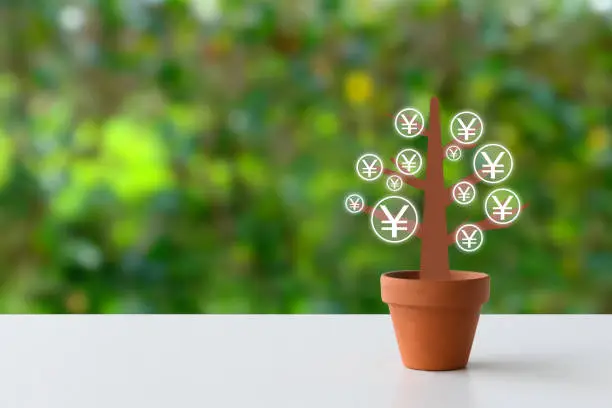
Perennial plants develop extensive root systems that access deep water sources and improve soil structure through natural aeration. Trees and shrubs represent highly efficient carbon sequestration systems, absorbing and storing atmospheric carbon dioxide for decades while providing cooling shade and windbreak protection.
Integrate diverse perennials, ornamental grasses, shrubs, and trees into your garden design to create lasting environmental benefits while reducing annual replanting needs.
Pollinator-Friendly Plants: Boosting Biodiversity
Pollinator-friendly plants attract essential bees, butterflies, and hummingbirds that ensure plant reproduction and maintain healthy ecosystem balance. These species create habitat corridors that support local wildlife populations while enhancing your garden’s productivity.
Plant Bee Balm, various Coneflower species, and native Milkweed varieties to create a welcoming environment for diverse creatures while supporting enhanced biodiversity throughout your landscape.
Beyond Chemicals: Eco-Friendly Pest and Disease Solutions
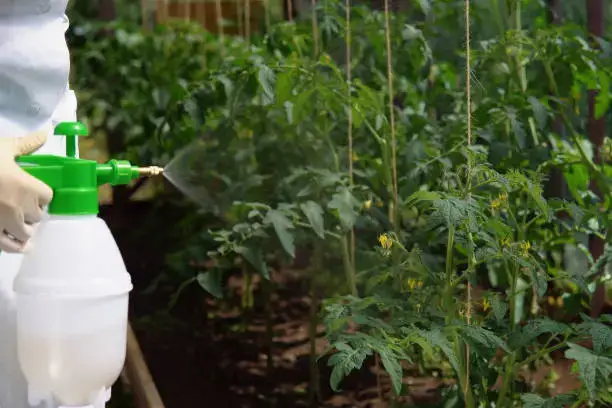
Chemical pesticides and herbicides harm beneficial insects, contaminate soil and water systems, and negatively impact human health. Eco-friendly garden tips emphasize natural pest management strategies that maintain ecological balance.
Companion Planting: Nature’s Defense System
Companion planting represents a time-tested technique where different plants provide mutual benefits, naturally repelling pests while improving growth and soil quality. This biological approach eliminates chemical intervention needs.
Plant aromatic Marigolds near tomatoes to deter harmful insects, grow nitrogen-fixing legumes alongside heavy-feeding crops, and create diverse plant communities that naturally resist pest infestations.
Embrace Beneficial Insects & Organic Sprays
Natural predators like ladybugs, praying mantises, and parasitic wasps provide effective pest control without harmful environmental side effects. Encouraging these beneficial insects helps maintain healthy ecological balance within your garden ecosystem.
Supplement biological controls with organic treatments including neem oil sprays, garlic-based deterrents, and physical barriers such as row covers or copper tape for slug protection.
Crop Rotation: Preventing Pests & Enriching Soil
Crop rotation breaks pest and disease cycles while improving soil fertility and structure. This practice reduces the need for artificial interventions by naturally managing soil-borne problems and nutrient depletion.
Rotate plant families annually, following heavy feeders with nitrogen-fixing legumes, then lighter-feeding crops to optimize soil health and minimize pest pressure.
Designing for Tomorrow: Resilient & Eco-Conscious Gardens
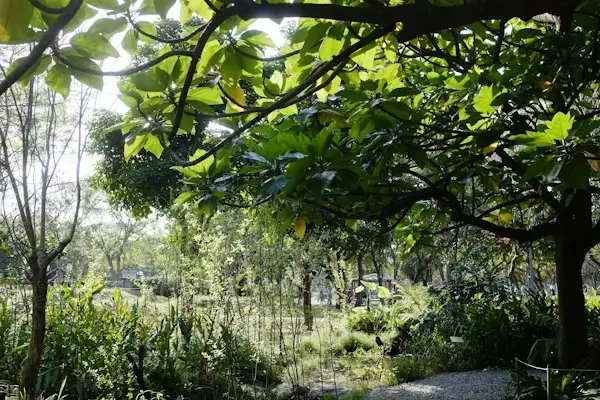
Sustainable garden design creates beautiful, functional spaces that adapt to changing environmental conditions while supporting ecological health.
Raised Beds & Flexible Garden Design
Raised beds offer resilient garden strategies for areas with poor soil or limited space. These systems conserve water by reducing runoff, improve drainage during wet periods, facilitate easier maintenance, and enable plant protection during extreme weather events.
Utilize modular raised bed systems or movable containers that allow flexibility in adapting your garden for future conditions based on changing weather patterns and seasonal needs.
Climate-Responsive Layouts & Green Infrastructure
Green infrastructure optimizes natural resources through thoughtful design elements including rain gardens, permeable paving, and strategic plant placement. These systems manage water flow effectively while reducing stormwater runoff and improving microclimate conditions.
Create garden zones based on water and sun requirements, incorporate terracing for slope management, plant deciduous trees for seasonal temperature control, and design with proper drainage to enhance environmental resilience.
Support Local Wildlife Habitat
Creating welcoming environments for various creatures contributes to maintaining local biodiversity while ensuring balanced ecosystem function within and beyond your garden boundaries.
Install native flowering plants, provide bird feeders and nesting boxes, eliminate harmful chemical treatments, and maintain small undisturbed areas with natural debris for wildlife shelter and overwinter habitat.
Minimizing Impact: Waste Reduction & Energy Efficiency

Global waste generation continues accelerating, making garden waste reduction essential for minimizing landfill burden and reducing carbon footprints associated with disposal and replacement.
Recycle, Reuse, Upcycle Garden Materials
Extending material lifecycles through creative reuse dramatically reduces waste while minimizing environmental impact. Repurpose containers for plant propagation, transform garden debris into valuable compost and mulch, and upcycle damaged tools into functional garden art.
These practices directly contribute to reducing your carbon footprint while creating unique, personalized garden features that reflect sustainable values.
Eco-Friendly Tools & Energy Efficiency
Traditional gas-powered equipment contributes significantly to air pollution, noise pollution, and fossil fuel dependence. Human-powered and battery-operated alternatives eliminate these environmental impacts while often providing better precision and control.
Invest in quality, durable hand tools that reduce waste through longevity, and choose equipment that helps in reducing greenhouse gas emissions associated with fossil fuel combustion.
Peat-Free Compost & Organic Choices
Peat harvesting destroys crucial wetland habitats while releasing stored carbon, contributing to climate change. Additionally, conventional agriculture’s high carbon footprint and chemical pollution make organic alternatives environmentally superior.
Select peat-free compost products, create homemade compost from organic materials, and prioritize organically grown plants and seeds to minimize negative environmental impact throughout your gardening practices.
Beyond the Garden Bed: The Three Pillars of Sustainable Horticulture
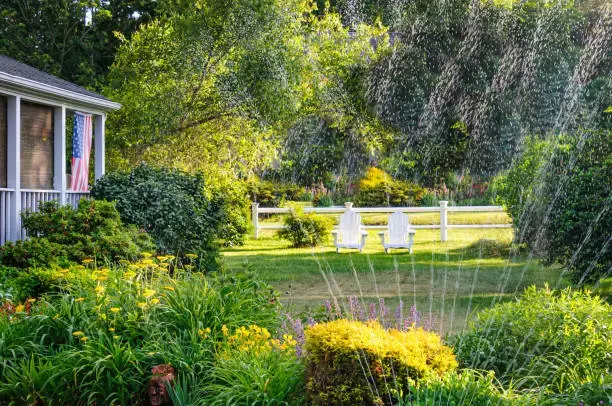
True sustainability encompasses environmental, economic, and social considerations that create lasting positive impact beyond individual gardens.
Environmental Sustainability
This pillar focuses on protecting and enhancing natural ecosystems through reduced chemical usage, water conservation, soil health maintenance, and biodiversity support. Every practice contributes to ecological balance while creating resilient growing systems.
Economic Sustainability
Cost-effectiveness and resource efficiency ensure long-term viability of sustainable practices. Optimizing resource use reduces operational costs, minimizing waste improves profitability, and increasing productivity through natural methods creates economic advantages.
Social Sustainability
Community engagement and education amplify positive impacts through knowledge sharing, fair labor practices, and collaborative environmental stewardship. These human connections create lasting change beyond individual properties.
Conclusion: Your Role in Cultivating Change
Adopting sustainable gardening practices represents far more than personal hobby enhancement—it’s active participation in global environmental stewardship. Every water-saving technique implemented, every native plant chosen, and every chemical avoided contributes to planetary health while creating beautiful, productive garden spaces.
Remember that transformation happens through consistent small steps rather than overwhelming changes. Start with one or two techniques that resonate with your current situation and gradually expand your sustainable practices as confidence and experience grow.
Begin implementing these eco-friendly garden tips today. Connect with local gardening communities, continue learning about regional best practices, and share your experiences to inspire others. Stay curious about new developments in sustainable horticulture while adapting techniques to your specific environmental conditions.
Your garden represents hope for a more sustainable future. Through thoughtful water wise gardening practices and ecological stewardship, you’re not just growing plants—you’re cultivating positive change that ripples outward to benefit your community and our shared environment. Embrace this beautiful journey toward sustainability and become an advocate for a greener tomorrow, one garden at a time.
Sustainable Gardening Tips: How to Grow More with Less Water
Picture this: vibrant vegetables flourishing in your backyard, colorful flowers attracting buzzing pollinators, and fresh herbs ready for harvest—all while using 50% less water than traditional gardens. This isn’t a gardening fantasy; it’s the reality of sustainable gardening. As more people discover the joy of growing their own food and creating beautiful outdoor spaces, we must consider gardening’s environmental impact and embrace practices that work with nature rather than against it. 🌱 Take your eco-friendly gardening to the next level with our exclusive product designed to support Sustainable & Organic Gardening—perfectly aligned with this article.
Sustainable gardening involves adopting eco-friendly practices that minimize environmental impact, conserve precious resources like water, and support local ecosystems. It’s about creating harmony between human needs and natural processes, resulting in gardens that thrive with less input while providing maximum benefits.

